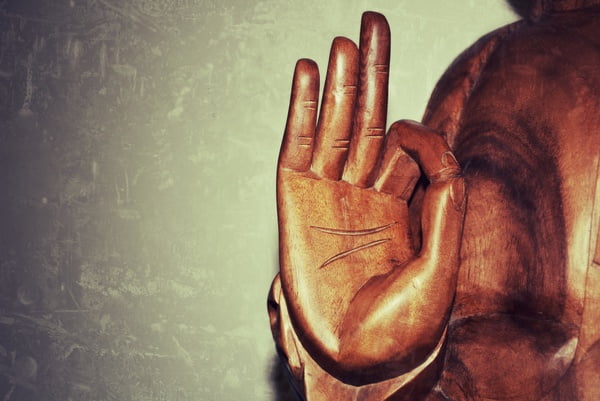
In Buddhist iconography, hand gestures or Mudras are used to symbolize different aspects of the Buddha’s teachings and are believed to have a powerful effect on the mind and body of the practitioner. Here are some of the most common hand gestures or Mudras used in Buddhist art and their meanings:
- Abhaya Mudra (Fearlessness Gesture): This gesture is made with the right hand raised to shoulder level with the palm facing outward. It represents protection, fearlessness, and dispelling of fear.
- Varada Mudra (Gesture of Giving): This gesture is made with the palm facing outward, fingers pointing down, and the arm extended downward. It represents generosity, charity, and compassion.
- Dharmachakra Mudra (Wheel-Turning Gesture): This gesture is made by joining the thumb and index finger to form a circle, with the other fingers extended. It represents the turning of the wheel of dharma, or the Buddha’s teachings, and the spread of knowledge and wisdom.
- Bhumisparsha Mudra (Touching the Earth Gesture): This gesture is made with the right hand reaching down to touch the earth, while the left hand rests in the lap. It represents the Buddha’s enlightenment and his connection to the earth.
- Dhyana Mudra (Meditation Gesture): This gesture is made with both hands resting in the lap, right hand resting on top of the left, palms facing upward. It represents meditation, concentration, and the Buddha’s attainment of enlightenment.
- Vitarka Mudra (Teaching Gesture): This gesture is made with the right hand raised to shoulder level, with the palm facing outward and the fingers forming a circle, while the left hand rests in the lap. It represents the Buddha’s teachings and the transmission of knowledge and wisdom.
- Anjali Mudra (Gesture of Respect): This gesture is made by joining the palms together at the heart level. It represents respect, reverence, and gratitude.

